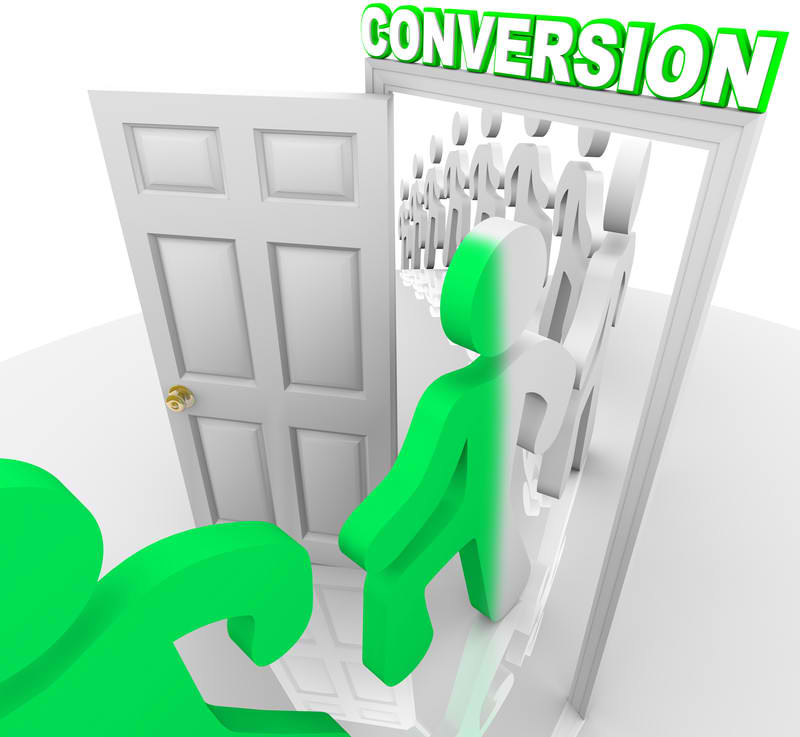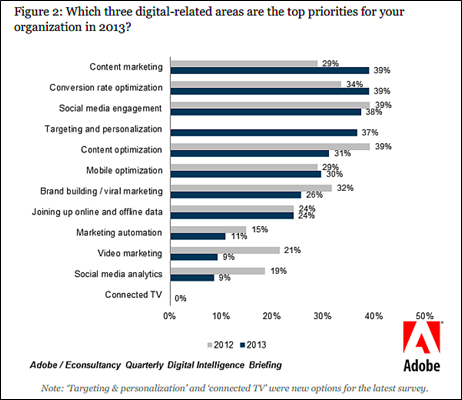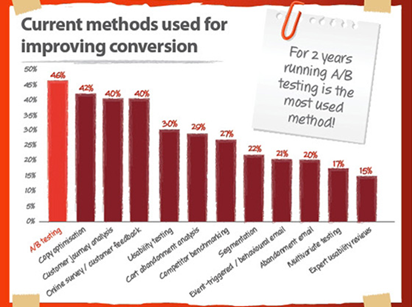
Your main website is the hub of your business’ online presence and is where most of your digital marketing objectives are taking place, whatever particular business purpose they may be. These website objectives vary, depending on how you have designed and built a particular website to cater for a particular purpose, which is usually summed up into these four categories:
- Generate sales for a product or service
- Generate leads from potential paying customers
- Generate traffic to increase impressions for paid advertisements
- Generate greater brand awareness
These are different end goals that depend largely on your intended business model. One thing is certain – all business owners want to achieve their intended goals. How close they can be in achieving these goals will depend largely on their conversion rates. The ability for websites to convert traffic into leads, sales or impressions depends on how the website is being optimized for conversion.
The infographic (click to zoom):
Conversion Rate Optimization (CRO) has become so important that it is considered a top priority among digital marketers with the same level of importance as content marketing.

There may be many questions entering your mind about what Conversion Rate Optimization (CRO) is and what it does and how it can eventually help business owners and digital marketers reach their main website goals and purpose. The following provides a brief introduction to Conversion Rate Optimization (CRO) as presented by Digital Marketing Philippines in a bid to jumpstart your website optimization process – and finally achieve your conversion goals.
What Is Conversion Rate Optimization (CRO)?
In the technical sense, Conversion Rate Optimization (CRO) is the process or method used for increasing the percentage rate of website visitors that gets converted into business leads or paying customers. The methods and techniques used in CRO were a result of years of testing and experimenting by digital marketers to determine which website improvement or element will generate the best results in terms of conversion.
The ultimate goal in CRO is to redesign and finalize website and landing page layout and content that will generate the highest percentage of site visitors completing an intended action without the need for increasing advertising expenditures. Like any redesign activity, CRO will require a certain level of cost in terms on time and resources, but the resulting increase in conversions will make it a worthy investment that will eventually affect the bottom line.
Why You Need Conversion Rate Optimization CRO?
Business owners and digital marketers perform a variety of actions with the aim of generating a particular response from their targeted web visitors. In many instances, their actions do not generate the kind of responses they want, or may vary widely from one visitor group to another. With inconsistent results like this, the ultimate goal for conversion is also inconsistent, with visitor traffic coming and going without generating any lead or sales.
The key to CRO is how your website can encourage or entice a website visitor to perform a specific action that will translate to either a sale or a generated lead. A website that does not convert makes the site useless from a business perspective. All your efforts, resources and investments will all go to waste on a website that does not convert. That is why Conversion Rate Optimization (CRO) is very important as it will provide your website the proper perspective and direction towards realizing its purpose and goal – and that is to generate profit for your business.
How CRO Works
As mentioned earlier, conversion rate is the measure of how much website traffic is converted into a lead or a sale. The process of improving conversion rates is what Conversion Rate Optimization (CRO) is all about. It would be important to note that CRO activities should be performed without the need to increase expenses for traffic generation.
CRO involves testing certain web elements in a website or landing page to determine the right combinations that will increase conversion rates. It also involves a clear understanding of your targeted audience in order to optimize your website and website elements into something that will appeal to your targeted audiences.
In the Conversion Optimization Report from Unbounce, A/B Testing stood as the most used method for CRO alongside other methods for improving conversion. This is backed by data from Marketing Charts which determined that 98% of digital marketers regard A/B Testing as a valuable and effective method for generating conversions. 13% of respondents however believe that their existing A/B testing approach is not good while 87% believes they should improve on how they can perform this test.

The following describes specific actions that you can perform as part of your Conversion Rate Optimization program. In general, this involves performing conversion testing in 5 basic steps, plus performing other action items intended to increase conversion rates.
Conversion Testing in 5 Easy Steps:
- Define specific goals and identify how to measure success towards this goal. An example is a goal to increase downloads to an eBook which you can measure by getting traffic that reaches the thank you page.
- Designate a landing page or a key web page where conversion action is intended to take place. This will be the focus of your testing.
- Determine which key elements in your page you will want to test like the Headline, Image and the Call to Action.
- Create variations or versions of the key elements you would like to test. Example is variations of your Call to Action, focusing on different wordings to deliver the call to a specific action. You can practically have more than 2 variables depending on your volume but 2 variables for an A/B testing will be enough.
- Choose an A/B Testing tool to use. These tools are available online and you can choose one depending on your budget, the ease of use, capability to do not only A/B testing but multi-variate testing as well, and report generation.
Ways to Increase Website Conversions
- Compelling Calls-to-Action
Sometimes, all it takes for people to take action is to entice or compel them with a bold call-to-action. Without a clear and specific call-to-action, website visitors will not know what to do next unless you specifically tell them so. Calls to action are placed in strategic locations along your copy and emphasized with compelling fonts, colors and graphics.
- Easy-to-Accomplish Sign Up Forms
Sign-up forms are sometime taken for granted. Digital marketers should understand that forms are a great way to engage targeted customers, capture relevant information and gain a better insight of them as a buyers or consumers. Keep your sign-up forms simple, easy-to-use and go directly to the point. Long forms will only turn-off site visitors. Keep it short and concise and keep targeted customers focused on your goals.
- Make Trust Symbols Prominent on Your Websites
Earning your website visitors’ trust is key to higher conversions, and making trust symbols prominent throughout your site can increase this trust factor. Include privacy statements, credit card acceptance icons, accreditations from trust agencies and testimonials from previous customers and other site visitors.
- Make It Easy for Site Visitors to Access Resources
Online users love to get free information like blog articles, whitepapers, ebooks and videos. Make it easy for your visitors to access these materials and resources. It will be a win-win situation with your visitors getting free materials that they find relevant, and in exchange you get valuable customer information that you can leverage for follow-ups – and possible future sales.
Whether your website is getting low traffic or a significantly high volume of visitors, but if none converts into leads or sales, then all these traffic is wasted. Even with a low traffic but if all converts to sales, then you can still achieve your conversion goals and eventually your online business goals. It is important to put Conversion Rate Optimization as a top Digital Marketing priority. It will take some patience and additional effort on your part but the results you will generate – higher conversion rates to leads and sales – will be well worth it.
Jomer B. Gregorio is a well-rounded expert when it comes digital marketing. Jomer is also known as a semantic SEO evangelist and practitioner. Check out our Digital Marketing Services today and let us help you in achieving positive and profitable results for your business.

